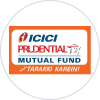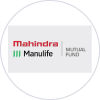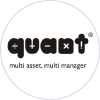
HDFC Mutual Fund
₹ 923435.74 Cr
AUM
77
Total Schemes

AUM
Total Schemes

Min. investment
5 Year Returns

Min. investment
5 Year Returns

Min. investment
5 Year Returns

Min. investment
5 Year Returns

Min. investment
5 Year Returns

Min. investment
5 Year Returns

Min. investment
5 Year Returns

Min. investment
5 Year Returns

Min. investment
5 Year Returns

Min. investment
5 Year Returns

Min. investment
5 Year Returns

Min. investment
5 Year Returns







































No, HDFC mutual funds are not inherently tax-free. The tax implications on HDFC mutual fund investments depend on various factors such as the type of fund (equity, debt, hybrid), holding period, and your tax bracket. While some types of mutual funds, like ELSS, offer tax benefits under Section 80C of the Income Tax Act, it's essential to consult with a financial advisor to understand the specific tax implications for your investments.
In general equity mutual funds give high returns in long-term, but there is a risk-factor attached to them as well.
While HDFC offers various mutual fund types, equity funds generally have the potential to provide the highest returns over the long term. However, it's important to remember that past performance doesn't guarantee future results, and equity funds also come with higher risk. It's advisable to consult with a financial advisor to determine the best HDFC MF type based on your individual risk tolerance and financial goals.
To start an HDFC Mutual Fund SIP online, you'll need to create an account on the HDFC Mutual Fund website or app. Once registered, choose the fund you want to invest in and set up a recurring investment. You can schedule the SIP frequency (weekly, monthly, quarterly, etc.) and the amount to be invested. Provide your bank details for automatic deduction, and complete the KYC process
To calculate your HDFC Mutual Fund SIP, you'll need to know the SIP amount, the expected annual return, and the investment horizon. Use an online SIP calculator or a financial advisor to estimate your future value. Factors like market fluctuations and fund performance can affect the actual returns.
If you have invested in a HDFC Mutual Fund scheme through the Bajaj Finserv platform, you can easily redeem it through the Bajaj Finserv website or app.
To increase your SIP amount in HDFC Mutual Fund, you can either:
HDFC Mutual Fund is a reputable AMC in India with a strong track record. However, like any market-linked investment, mutual funds carry inherent risks. The safety of your investment depends on various factors, including the fund's investment strategy, market conditions, and your individual risk tolerance. It's essential to conduct thorough research or consult with a financial advisor to select schemes that align with your financial goals and risk appetite.
For short-term investments (up to three years), debt funds are generally suitable. Within this category, the most appropriate choice depends on your specific investment horizon. Overnight funds are ideal for very short-term needs, while liquid funds are suitable for investments up to three months. For slightly longer durations, low-duration funds (6-12 months) and short-duration funds (1-3 years) can be considered. It's advisable to match your investment horizon with the average portfolio maturity of the chosen fund to minimize interest rate risk.
To obtain your HDFC Mutual Fund statement, visit the HDFC Mutual Fund website and request a statement. You can also use platforms like CAMS Online or Kfintech to request a consolidated statement.
HDFC Infrastructure Fund is a sectoral mutual fund that invests predominantly in companies engaged in infrastructure development. As of March 28, 2025, the fund's Net Asset Value (NAV) stood at ₹47.69. It has an expense ratio of 1.04% and manages assets worth ₹2,104.89 crore. Over the past three years, the fund has delivered a Compound Annual Growth Rate (CAGR) of approximately 30.75%. Investors can start with a minimum investment of ₹100.
HDFC Small Cap Fund focuses on investing in small-cap companies with high growth potential. As of February 28, 2025, the fund manages assets worth ₹28,119.87 crore and has an expense ratio of 0.82% for the Direct Plan. It has delivered annualized returns of 19.58% over the past three years. The minimum investment amount is ₹100.
HDFC Mid-Cap Opportunities Fund invests primarily in mid-cap companies, aiming to capture growth opportunities in this segment. As of February 28, 2025, the fund's Assets Under Management (AUM) are ₹67,578.59 crore. It has provided annualized returns of 25.16% over the past three years. The minimum investment required is ₹100.
HDFC Focused 30 Fund is an equity mutual fund that maintains a concentrated portfolio by investing in up to 30 stocks across market capitalizations. As of February 28, 2025, the fund manages assets worth ₹15,515.87 crore and has delivered annualized returns of 25.06% over the past three years. Investors can begin investing with a minimum amount of ₹100.
HDFC Flexi Cap Fund offers the flexibility to invest across large-cap, mid-cap, and small-cap stocks. As of February 28, 2025, the fund's AUM is ₹64,124.15 crore, with annualized returns of 23.45% over the past three years. The minimum investment amount is ₹100.
HDFC Large and Mid Cap Fund invests in a mix of large and mid-cap companies, aiming for balanced growth. As of February 28, 2025, the fund manages assets worth ₹21,526.58 crore. It has delivered annualized returns of 25.18% over the past three years. The minimum investment required is ₹100.
HDFC Retirement Savings Fund-Equity Plan is designed for long-term retirement planning, investing primarily in equities. As of February 28, 2025, the fund's AUM is ₹3,655.97 crore, with annualized returns of 22.71% over the past three years. Investors can start with a minimum investment of ₹100.
HDFC Housing Opportunities Fund focuses on companies benefiting from the growth in the housing sector. As of February 28, 2025, the fund manages assets worth ₹1,153.89 crore and has delivered annualized returns of 31.22% over the past three years. The minimum investment amount is ₹100.
HDFC Balanced Advantage Fund aims to provide a balanced investment strategy by dynamically allocating assets between equities and debt. As of February 28, 2025, the fund's AUM is ₹61,598.74 crore, with annualized returns of 30.83% over the past three years. Investors can begin with a minimum investment of ₹100.
HDFC TaxSaver Fund is an Equity Linked Savings Scheme (ELSS) that offers tax benefits under Section 80C of the Income Tax Act. As of February 28, 2025, the fund manages assets worth ₹11,285.76 crore and has provided annualised returns of 28.77% over the past three years. The minimum investment required is ₹500.
While no HDFC Mutual Fund SIP consistently offers a 40% annual return, the HDFC Infrastructure Fund has delivered impressive performance in recent years. As of 2025, this fund has achieved a 5-year CAGR of approximately 38.39%, making it one of the top performers in HDFC's portfolio. However, it's important to note that such high returns are subject to market volatility and are not guaranteed.
The 5-year returns of HDFC Mutual Funds vary across different schemes. For instance, the HDFC Small Cap Fund has delivered a 5-year CAGR of around 38.87%, while the HDFC Flexi Cap Fund has achieved approximately 33.79% over the same period. These figures highlight the strong performance of HDFC's equity-oriented funds in recent years.
Based on recent performance and assets under management, the top three HDFC Mutual Funds are:
HDFC Small Cap Fund: Known for investing in small-cap companies, this fund has delivered a 5-year CAGR of approximately 38.87%.
HDFC Mid-Cap Opportunities Fund: Focusing on mid-cap stocks, this fund has achieved a 5-year CAGR of around 30.44%.
HDFC Flexi Cap Fund: With a diversified portfolio across market capitalizations, this fund has recorded a 5-year CAGR of about 33.79%.
HDFC Mutual Fund is one of India’s most trusted AMCs, known for consistent fund performance, robust AUM growth, and strong equity fund management. For instance, the HDFC Large and Mid Cap Fund has delivered annualised returns of 21.35% (3 years) and 27.77% (5 years), making it a reliable investment option.
The minimum investment amount in HDFC Mutual Fund varies by scheme. Most funds allow a low entry point, with lump sum and SIP investments starting at just Rs. 100. The maximum permitted through OTM and e-mandate channels is typically capped at Rs. 1 crore per transaction.